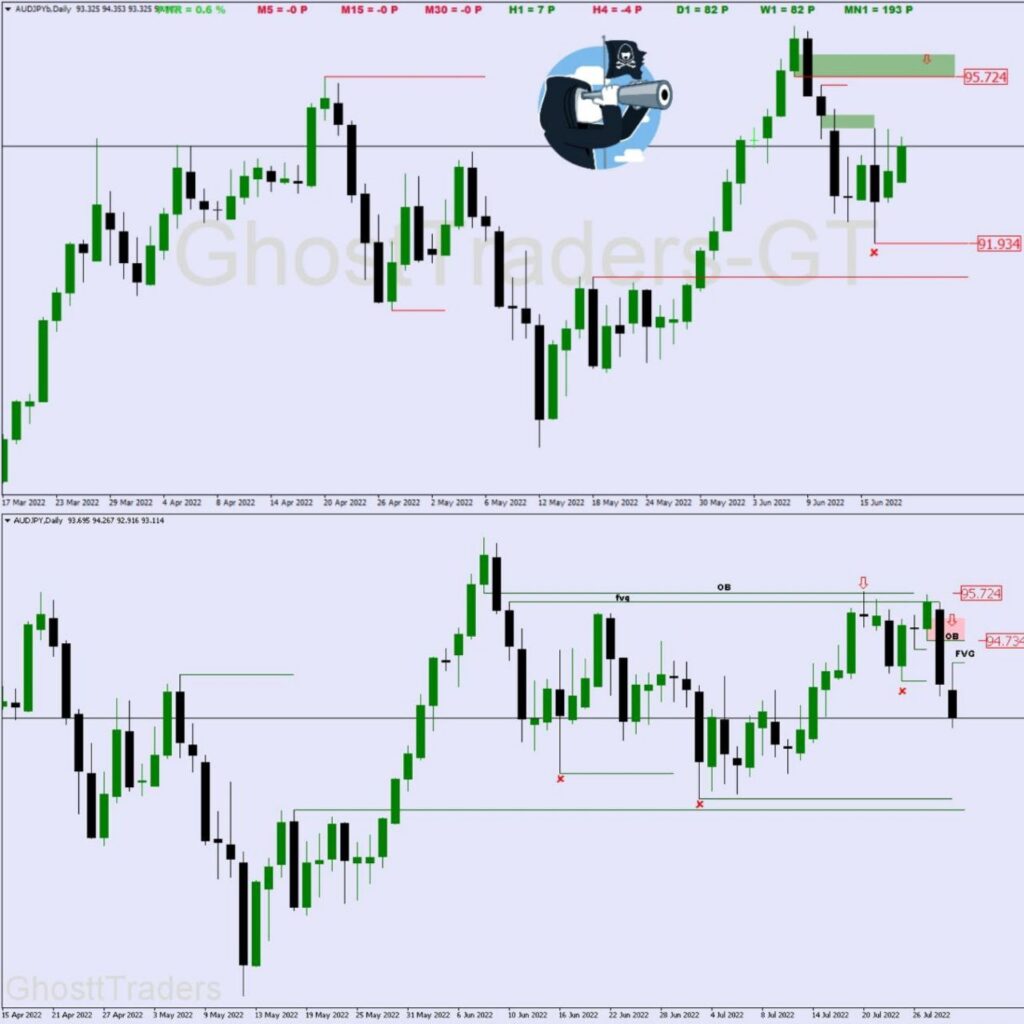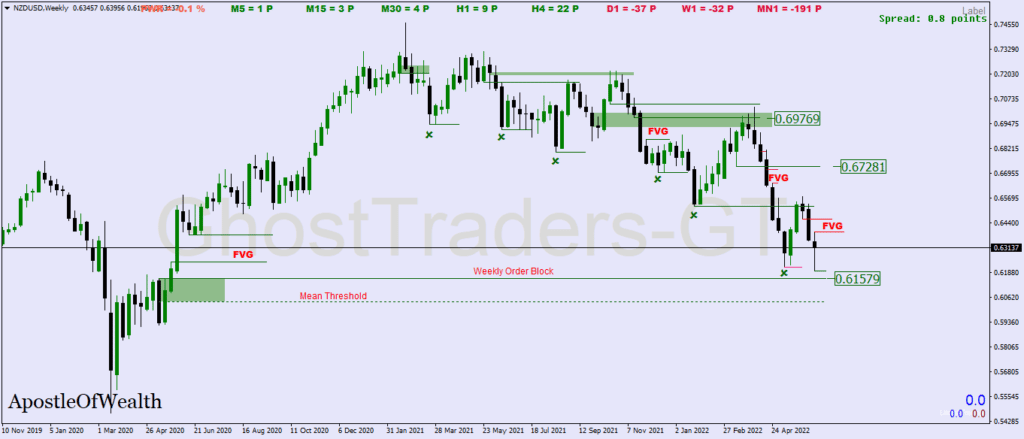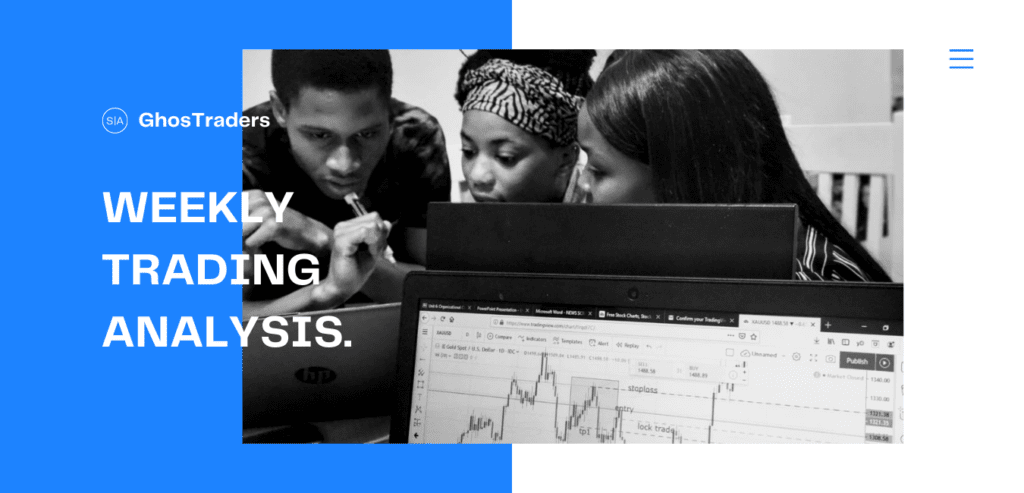what are order blocks forex?
An Order Block(OB) in forex is a change in the state of price delivery where big participants and big banks have left their orders in the form of sell limits or buy limits. In Forex, there are two types of order blocks: a bearish order block, which is the last up candle that forms the highest high before the down move, and a bullish order block, which is the last down candle that forms the lowest low before the up move.
Order Block Pdf
Download this free Order block pdf, This complete PDF guide
This video will help you understand exactly what order blocks are in forex. The Content written in this blog is not included in this video. Therefore, we recommend reading the blog after watching the video.

Validation of order blocks in forex?
A bullish order block in forex is validated when the high of the lowest down candle (Bearish Candle) is engulfed by a later-formed candle. A bearish order block is validated when the low of the highest up candle (Bullish Candle) is engulfed by a later formed candle.
Bullish and Bearish Order Blocks
Generally, bullish and bearish order blocks are defined according to their influence on price; if price reaches a certain order block and we see price decline or sell short, we call that a bearish order block, and if price reaches a certain order block, and we see price go long, that is a bullish order block. Price reactions determine whether an order block is bullish or bearish. In summary, The final up candle that makes the highest high before the down move forms a bearish order block, while the final down candle that makes the lowest low before the up move forms a bullish order block.
How to trade order blocks in forex
In forex, if price trades higher away from the bullish order block(OB), creating a liquidity void, and then later returns to the bullish OB, thus closing the previously created liquidity void as price was trading away from the bullish OB; this will be bullish, so we will anticipate buy setups in the market using the bullish OB as an initial entry point.
This Picture Indicates a bearish OB in the Forex chart.

When price trades lower away from the bearish order block(OB) in forex, it creates a liquidity void and then returns to the bearish order block. thus, closing the previously created liquidity void, as price was trading away from the bearish OB; this will be bearish, and we will anticipate sell setups in the market using the bearish OB as our entry level.

The stop loss is set at the low of a bullish OB. If we are in a bearish OB, our stop loss will be at least 5 pips from the high of the bearish order block.
How To Trade Bearish Order Blocks In Forex
We look for sell setups in the market using the bearish order block as our point of reference to selling short when price trades lower away from the bearish order block, creating a liquidity void, and then later returns to close the previously created liquidity void as price was trading away from the bearish order block.
The Below Chart Example of the bearish order block shows us a trade setup. The reason we were anticipating a sell position is not only based on bearish order blocks but for the sake of this discussion let’s focus on order blocks only. Your task now is to go back and backtest focusing on order blocks and order flow trading.

How To Trade Bullish Order Blocks In Forex?
We look for sell setups in the market using the bearish order block as our point of reference to selling short when price trades lower away from the bearish order block, creating a liquidity void, and then later returns to close the previously created liquidity void as price was trading away from the bearish order block.

The Below Chart Example of the bullish order block shows us a trade setup using a bearish ob. The reason we were anticipating a buy position is not only based on the bullish order block but for the sake of this discussion let’s focus on order blocks only. Your task now is to go back and backtest focusing on order blocks and order flow.

Order block Misconceptions and the reason they fail
The context surrounding order blocks is what makes order blocks successful; not every down or up close candle prior to the down or up move is an order block. An order block without a fair value gap is not an order block, and it’s not worth trading. the context surrounding an order block makes it successful because it has to be validated by a fair value gap and needs other institutional trading concepts such as order flow to refine which order block is most likely to fail or succeed.
The Importance of Order Blocks
Order Blocks play a key role in price delivery algorithm by being a reference point to either go long(buy) or go short(sell) on a particular trading pair by big participants in the foreign market. The market is not random, price is engineered, meaning there’s a price delivery algorithm that feeds on liquidity; This is why order blocks should be traded with a clear understanding of order flow.
The Understanding of Order Flow in selecting The best Order Blocks
Order Flow is a trading concept that focuses on which side of the market price is most likely going to collect liquidity; This could be either sell-side liquidity or buy-side liquidity. If price collects sell-side liquidity, we are anticipating a bearish order flow, and if price collects buy-side liquidity, we are anticipating a bullish order flow.
Liquidity Pools rest on previous highs and previous lows. This could be in the form of a pending order or stop loss; therefore, sell-side liquidity is simply the liquidity pools resting on previous lows while buy-side liquidity is simply the liquidity pools on previous highs. This is referred to as a break in market structure(B.M.S) or shift in market structure(.SM.S) In forex.
The Understanding of order flow helps you understand where price is most likely going to collect liquidity. With that understanding, you can avoid order blocks that are residing on the side of the market where price is most likely going to collect liquidity. meaning that based on order flow, we can trade order blocks in line with where the market is.
When Order Flow is bearish, avoid looking for bullish order blocks; instead, look for bearish order blocks to trade. and when order flow is bullish, look for bullish order blocks and avoid bearish order blocks to trade.
Liquidity pools and liquidity voids in Trading Order Blocks
Liquidity pools and liquidity voids are part of the institutional trading concepts that add to the context surrounding order blocks. Liquidity Pools are areas in the market where price will be drawn to either collect sell-side liquidity or buy-side liquidity. liquidity rests on previous highs and lows. Equal highs or relatives equal turns to have a lot of liquidity, and price is drawn to it because the price delivery algorithm feeds on liquidity.
The reason there’s a lot of liquidity is simply that where the money is either in the form of stops or pending orders, this is where price is highly manipulated.in such areas, we turn to see stop runs or fake-outs. Therefore avoiding orders residing in areas where there are a lot of liquidity pools will help avoid unnecessary trading losses.

Liquidity voids are areas in the market where there’s less price action due to market volatility this could be caused by high-impact news or institutional reference points such as higher time frame order blocks or fair value gaps. due to the liquidity void, we turn to have an imbalance in the market; therefore, price will retrace to balance or close the liquidity void that has been created and continue in its direction. as a trader is to look for order blocks nearby, that price will use as a point of reference to either sell or buy after a price has retraced to close the void that has been created.

High Probability Order Blocks
- OB with a Fair Value Gap ideal
- An OB that lineup with Order Flow is ideal
- An OB with a Clean Liquidity Void
Order blocks that are most likely to fail
- An OB near resting liquidity pools
- OB with no Fair Value Gap, An Ob is not an Ob without fvg
- OB that is not in line with the Order Flow
Propulsion Block
A bullish propulsion block is a candle, that trades down into a bullish order block, that acts as a support for higher price movements.

A bearish propulsion block is a candle that has previously traded up into a bearish order block and is acting as resistance for lower prices.
Hey Check Our Instagram account and stay updated.
Related post: How To Trade Mitigation Block and Breakers

